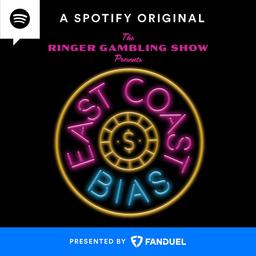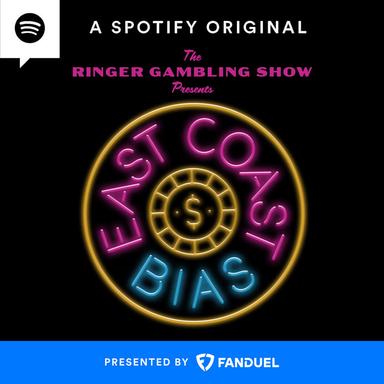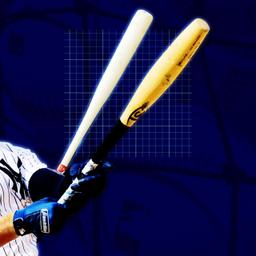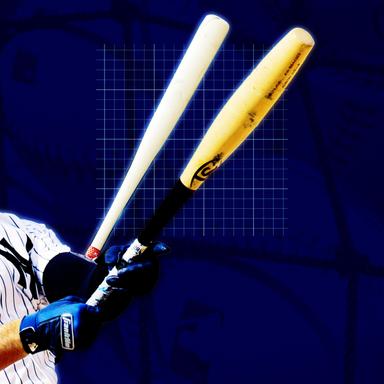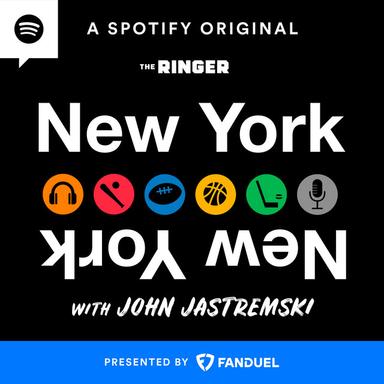Year after year, the fact remains: Nothing makes baseball fans happier than overreacting to small-sample baseball before the season gets into full gear. We were barely 72 hours into the new baseball season before we lost our collective minds over a baseball equipment innovation that could transform hitting in the sport. Torpedo bats put the league on notice one weekend and are now barely being mentioned a week later.
The Red Sox moved Rafael Devers to full-time designated hitter, and for about a week, he couldn’t hit, going 0-for-21 with 15 strikeouts in the first five games. Then, Devers had four hits on Sunday Night Baseball, the Red Sox plated 18 runs on St. Louis, and now all is right for Boston’s slugger once again.
Everyone in baseball has played at least 12 games now. What have we learned, both on and off the diamond, that could mean something for the rest of the upcoming season? Here are the seven biggest MLB takeaways from the beginning of the season.
The Blue Jays gave Vlad Guerrero Jr. a massive extension. Can they build a contender around him?
Toronto has failed in most of its attempts to acquire big-name free agents in recent seasons. The Blue Jays were reportedly in the mix and/or finalists for Roki Sasaki, Juan Soto, Shohei Ohtani, and Corbin Burnes, but they missed out on all four (and more).
For all of their regular-season success, the 2020s Jays have yet to win a single playoff game. They’ve been good enough to make the playoffs in three of the last five seasons (plus won 91 games when they narrowly missed the playoffs in 2021)—but never quite good enough to win a highly competitive AL East. In three playoff appearances as a wild card, the Jays have lost all six games.
What once appeared to be an emerging superstar core made up of the sons of former major leaguers hasn’t quite panned out, either. Former top prospect Cavan Biggio is now in Kansas City. Bo Bichette is a solid shortstop but had the worst season of his career in 2024, with a .598 OPS. He will be a free agent this winter if the Jays don’t extend him. Guerrero has been the standout among them, and it was crucial for Toronto to demonstrate to the league that it could retain its homegrown superstar talent.
It’s not that the Blue Jays haven’t attempted to complement their potential young core with veteran talent. The acquisitions of José Berríos, Chris Bassitt, Kevin Gausman, and George Springer signaled to the league that they were serious about breaking into MLB’s elite in the last half decade. However, the decline of young pitcher Alek Manoah, the injury to and release of Jordan Romano, and the aging of the aforementioned veterans led Toronto to finish with 74 wins in 2024.
Guerrero, whose contract includes a full no-trade clause and no opt-outs or deferrals, is expected to complete his career with the Blue Jays. But their farm system was 24th in Keith Law’s organizational rankings, and it’s unclear how the franchise will return to being a consistent 90-win team. They’ll need a lot more than just Guerrero.
Kristian Campbell is the early rookie breakout in the American League.
Second base has been a black hole for Boston in recent seasons, and the Red Sox got absolutely nothing from the position last year. Red Sox second basemen slashed .200/.250/.282 in 2024, ranking last in MLB with a 45 wRC+, which was 55 percent below the league average. Defensively, they also ranked 29th in outs above average (OAA) last year. Their -2.3 WAR was tied with White Sox catchers for the worst group at any position on any team.
Given their lackluster performance last year, an upgrade at second base felt like the most obvious spot for Boston, right? Enter Kristian Campbell. Shortly after his MLB debut, the Red Sox signed him to an eight-year, $60 million extension. Campbell has quickly become a front-runner for American League Rookie of the Year, with odds of +220 at FanDuel Sportsbook after 54 plate appearances in 13 games.
The underlying numbers show real promise for Campbell’s future in the league. He’s not going to maintain a .318 batting average or a .971 OPS, of course, but he has demonstrated above-average sprint speed, bat speed, and a keen eye at the plate. He has all the tools to be Boston’s everyday second baseman in a league where quality second base offense is rare.
Much ado about torpedo bats?
Full disclosure: After consuming all the torpedo bat content during opening weekend, I decided it was time to mute the word “torpedo” on Twitter/X. Not because I don’t think there’s probably a slight edge to be had at the margins for a certain subset of hitters, or because I hate the Yankees and think they’re cheating.
As the hype surrounding torpedo bats fizzled out, you soon realized that there are more important reasons why the Yankees hit approximately 1,563 home runs against the Brewers on opening weekend. To start, they had excellent hitting weather, with the wind blowing straight out in the homer-friendly Yankee Stadium. And honestly, the Brewers were their own worst enemies. Milwaukee threw 125 fastballs at 90 mph and below, and the Yankees slugged 1.100 on those pitches. Yes, there are some position player pitches and cutters in that data, but Milwaukee wasn’t exactly throwing prime pitchers like Burnes, Brandon Woodruff, and Devin Williams (who’s now a Yankee) in the series.
The bats have been used around the league by multiple hitters on multiple teams in multiple seasons—including Giancarlo Stanton last October. While the torpedo bats gained notoriety on social media because of how incredible New York’s hitting was for a few games, I doubt we’ll be talking about torpedo bats by May. After all, the Yankees scored just six total runs in three games across this week’s road series in frigid Detroit.
Atlanta is 3-9, and the National League won’t do them any favors.
The Braves were never expected to play their best baseball in March and April. Ronald Acuña Jr. and Spencer Strider haven’t taken a swing or thrown a pitch for the big league club yet, and those two players are arguably the Braves’ best hitter and pitcher, respectively. But Atlanta still won 89 games without having them for most of last season. The Braves’ offseason trended from inconvenient and maligned to outright underwhelming, in retrospect. The bullpen has struggled to hold the few leads the lineup has given them, and the outfield situation is dubious now that Jurickson Profar is suspended for 80 games after testing positive for a banned substance.
A West Coast road trip against the Padres and Dodgers to begin the season is the toughest possible start. And the pressure isn’t letting up on Atlanta even after taking two of three from the Phillies this week. The Phillies and Mets are already five games ahead of the Braves, and with the success of the National League West, wild-card spots could be hard to come by.
While the Braves’ frontline starters—Chris Sale, Strider, and Spencer Schwellenbach—are as good as any in the sport, Reynaldo López’s injury will test their starting depth in a major way.
Some cases for optimism: Atlanta’s offense is still sixth in barrel rate, ninth in hard-hit rate, and seventh in walk rate through these first 12 games. There’s still a ton of power and patience in this lineup and better days are undeniably ahead.
Strong bullpens rule the NL West.
Remember when the Dodgers started 8-0 and seemed headed toward a historic season? Well, they still might be, but those same Dodgers are now sitting in third place in their own division. The Dodgers have lost four of their last six games, and both the Giants and Padres have surpassed them in the standings on the back of their own red-hot starts. San Diego lost a series in Chicago, but not before sweeping two 2024 playoff teams, the Braves and Guardians.
The Giants brushed aside the Astros in a sweep and then followed that up with two dramatic walk-off wins in one weekend in a sweep of the Mariners at home.
These three teams began the season with some of the league’s best bullpens on paper, and they’ve proved their dominance in real life. The Padres, Giants, and Dodgers rank first, third, and fourth in bullpen ERA. Evaluating bullpens is notoriously difficult, so it’s important to look at the underlying metrics.
All three bullpens have elite stuff. All three do an excellent job of preventing home runs, and all but the Giants rank well above average in strikeout minus walk rate. This season, all three should prove to be difficult to score on, making them a formidable trio.
Also, Arizona is first in bullpen xFIP thus far in 2025, so this could be a historic division for relief pitching.
Pitching was supposed to be the Mets’ weakness … right?
The Mets have the lowest ERA in all of baseball. It would be easy to dismiss this because they faced the Marlins six times in 12 games, but Miami is actually the only team to score more than three runs on the Mets all season. Even better, the Marlins did it five times!
Most expected New York’s bullpen to perform well this season, but no one would have predicted that the starting rotation would also feature the lowest ERA in the sport. Even if your response is “But it’s only 12 games,” it’s notable because the rotation was supposed to be a major point of uncertainty after injuries to Sean Manaea and Frankie Montas in spring training. Starter Griffin Canning and reliever Max Kranick look like classic David Stearns diamond-in-the-rough finds. Tylor Megill’s durability has always been in question, but for right now, he is healthy and pitching well. Meanwhile, Kodai Senga still has the highest ceiling on the team’s staff.
The biggest question right now is whether or not the pitchers can keep the walks down. All of the Mets starters have had their share of command problems. It hasn’t caught up with them yet, because the Mets have the second-highest left-on-base rate in the league, but if the Mets keep giving out so many free passes, it will become a real weakness and runs will be scored in bunches. New York ranks 29th in location+, an advanced pitching metric that assesses pitchers’ command.
The most encouraging aspect of the Mets’ start is that their offense ranks 20th in wRC+, and yet the team is 8-4 because of the pitching.
Kyle Tucker could bring the Cubs back to October baseball … and become the lone prized offseason free agent.
Now that Guerrero is extended, the 2026 free agent class of hitters isn’t particularly deep. There are DH sluggers like Kyle Schwarber and Marcell Ozuna; center fielder Cedric Mullins and shortstop Bo Bichette may not remain at those positions for long. There’s also unicorn infielder Luis Arraez, aging vets like Eugenio Suárez and J.T. Realmuto, and maybe Pete Alonso, who has an opt out. The undeniable gem of the offseason is Cubs right fielder Kyle Tucker, who will be 28 years old when he signs a mega contract this winter.
Contract-year Tucker is slashing .322/452/.678 with five homers, 16 RBIs, and seven more walks than strikeouts. His 1.130 OPS is the third-highest OPS in the National League. Tucker has always flown under the radar in MVP conversations because he’s always been a jack of all trades, never dominant in any one statistical category.
But what if Tucker has the best year of his career just before he hits free agency? Tucker has increased his walk rate every year from 2019 (5.6 percent) to 2025 (19.2 percent), which serves as a sign of his continued maturing and development as a hitter. It’s early, but Tucker also has a higher hard hit rate than he did in each of the past five seasons.
The suitors are sure to be circling either way, and his bat in the heart of the Cubs order is exactly what Chicago needs to contend in the NL Central.
